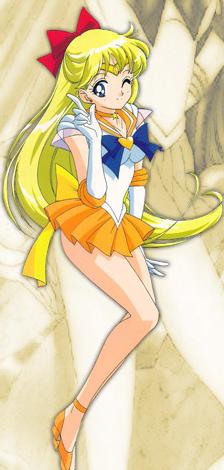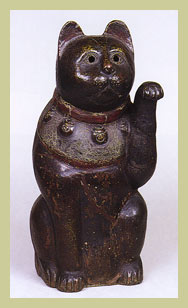Monday, October 8: The Scribbler
ACCOUNTING FOR TASTE
by James Lincoln Warren
I recently advised an aspiring young writer that one of the things he should try to be is flexible. What I meant was he shouldn’t be narrowly defined by his own tastes, that he try not to write just what he wanted, but to try writing something that somebody else would really want to read. Lots of unsuccessful wordsmiths suffer from a chauvinistic loyalty to their own prose, fired by the belief that the reason they can’t sell anything is because their writing is so unique that it can’t be pigeon-holed by mere convention. A writer, however, has a responsibility to his readers to deliver stories that will satisfy readers’ expectations. That means maintaining an awareness of prevailing tastes in the marketplace.
Now, I’m not suggesting that aspiring writers write formulaic tales that conform strictly to a trend. There is no more certain road to authorial disaster than suppressing one’s creativity by pandering to fashion. But you should never forget that story-telling is interactive — the author needs the reader more than the reader needs the author.
And this got me thinking about the slippery slope of changing taste. Sometimes you can ride the wave and sometimes you wipe out. Tastes change constantly, and sometimes profoundly.
Consider Japan.
In former days, the concept that dominated the Japanese aesthetic was shibumi, (adj. shibui), a word indicating subtle, simple, sublime — spare elegance, if you will. Today, however, the ruling characteristic is kawaisa (adj. kawaii), over-the-top cuteness.
 Visual representations of feminine beauty in pre-20th century Japan were called bijinga, from bijin, meaning a beautiful woman. The picture at left, “Woman with Shamisen: Evening Bell” (1825), is by 19th century bijinga master Kikugawa Eizan, and represents a geisha. It perfectly demonstrates shibumi. The woman’s S-curve stance against the strict perpendiculars of the background is a masterpiece of refined understatement. It’s an image you can contemplate with great pleasure for hours.
Visual representations of feminine beauty in pre-20th century Japan were called bijinga, from bijin, meaning a beautiful woman. The picture at left, “Woman with Shamisen: Evening Bell” (1825), is by 19th century bijinga master Kikugawa Eizan, and represents a geisha. It perfectly demonstrates shibumi. The woman’s S-curve stance against the strict perpendiculars of the background is a masterpiece of refined understatement. It’s an image you can contemplate with great pleasure for hours.
If you have the patience. Maybe you prefer the allure of adventure.
 So, now compare Eizan’s picture with this contemporary image of a woman from the popular Japanese anime “Sailor Moon”. (The character depicted is Sailor Venus, whose non-superhero name is Minako.) Here, the lady is not bijin — she is bishouju: “pretty girl”. Essentially she has a Barbie-doll figure (especially the impossibly long legs), big blue Xavier Cugat eyes, and pop princess blonde hair — in fact, she has none of the traditional elements of classic Japanese beauty except for pale skin — draped not in a kimono, but wearing a pleated tutu, with big ribbon bows in her hair and on her sailor’s blouse (the traditional uniform for Japanese schoolgirls). If the drawing style weren’t so characteristically Japanese, so kawaii, she wouldn’t seem Asian at all.
So, now compare Eizan’s picture with this contemporary image of a woman from the popular Japanese anime “Sailor Moon”. (The character depicted is Sailor Venus, whose non-superhero name is Minako.) Here, the lady is not bijin — she is bishouju: “pretty girl”. Essentially she has a Barbie-doll figure (especially the impossibly long legs), big blue Xavier Cugat eyes, and pop princess blonde hair — in fact, she has none of the traditional elements of classic Japanese beauty except for pale skin — draped not in a kimono, but wearing a pleated tutu, with big ribbon bows in her hair and on her sailor’s blouse (the traditional uniform for Japanese schoolgirls). If the drawing style weren’t so characteristically Japanese, so kawaii, she wouldn’t seem Asian at all.
You might think that “Sailor Moon” is aimed at adolescent females, and you’d be right. But the bishouju type is in evidence everywhere. In one adult-themed anime, “Elfen Lied”, the principle character regularly dismembers her enemies with extreme graphic violence, leaving gore spattered everywhere, and frequently appears nude. Except for having red hair and green eyes — and horns on her head that look like cat’s ears — she’s a dead ringer for Minako.
Cats are admired by the Japanese as by no other nationality, perhaps because of their elegance and dignity, and they are well represented in Japanese art. This picture dates from about 1850. It is a very cat-like cat, plump and pleased with itself and its surroundings, sleeping contently wearing a feline Mona Lisa smile.
And here is a contemporary Japanese depiction of a cat, the famous Hello Kitty. I’m sure you’ll notice that Hello Kitty is coquettishly winking, just like Minako. In America, we have a tendency to think of Hello Kitty as being strictly for little girls, but trust me, it is not so in Japan, where the Pokémon Pikachu is painted on the side of Air Nippon jetliners carrying salarymen from Tokyo to Osaka and cutesy cartoon characters are used to recruit young men into the military.
And while we’re on the subject of cats, you can see the transition from the ideal of shibumi to that of kawaisa most clearly in the evolution of the most characteristic feline image in Japanese culture, the maneki neko, the Lucky Beckoning Cat.
 On the right is a figure from the Edo Period, i.e., the time of the Takugawa shoguns’ dictatorship. Below is a contemporary version such as you can purchase in any shop in Little Tokyo.
On the right is a figure from the Edo Period, i.e., the time of the Takugawa shoguns’ dictatorship. Below is a contemporary version such as you can purchase in any shop in Little Tokyo.
So what does all of this mean? Well, it doesn’t mean I’m complaining about the decline of Japanese culture. Nineteenth century Japan endured one of the most brutal and oppressive police states in history, whereas the Subaru I drive was manufactured in a democratic Japan dedicated to peace and prosperity.
I love shibumi, but it doesn’t necessarily follow that I despise kawaisa. Actually, I think that Minako is pretty darn cute.
I’m just trying to be flexible.
—
Nose Bowl Update
In the biggest upset this season, the Blandford Ordinal defeated WSC by a single point in the last minute of play, and WCLA was manhandled by the previously 0-5 Nostradamus Belligerent Micks. That leaves Calpurnia, Oregano, and Aridzona State top dogs — bloodhounds, that is — in the Fact 10 Conference. Stay tuned.





















[…] and cutesy cartoon characters are used to recruit young men into t he military…. source: Monday, October 8: The Scribbler, […]
I really enjoyed this article. Being a Japanese myself, though, I have to say that, as far as I know, even in Japan Hello Kitty is mostly for girls (little and adolescent). If grown men admit to having a penchant for Hello Kitty, he might be thought a little weird . . . or funny! Pokemon is different, though. Pokemon is like the Japanese version of Disney . . . appeals to young and old, male and female!
Oh, I suddenly miss Japan. . . .
I am very gratified to hear from you, Yoshinoro Todo! (Frankly, I was fishing for a response from you.)
I admit I overstated Hello Kitty, although here in the U.S., I have known fully grown women who sported HK paraphernalia. Still, I probably should have stuck with Pikachu. Although Japanese popular culture is gaining popularity in the U.S. — particularly the more fantastic manga — most Americans are still completely baffled by kawaisa‘s adult manifestations.
Hmmmm. I think the obsession with kawaii is a cultural phenomenon unique to Japan. In the Western World, people also like things/anime characters/other people etc. that are over-the-top cute (the closest English term to kawaii, in my opinion), but they certainly aren’t obsessed with them. I think it’s great that Japanese pop culture is being imported all over the world these days . . . it makes the world a more diverse and interesting (not to mention cuter) place. LOL.